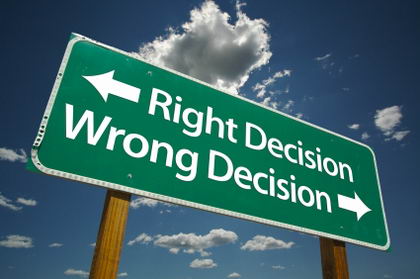Games Decisions
Welcome Back!,
I thoroughly enjoyed reading the article, "Decision-making and flow theory". I found it to be a very interesting and informative read. The reading for this week is about the interactivity between players and systems that sets games apart from most other traditional media. This articles discusses decision making and flow theory for games. By being a systems designer for games, you will have to deal with these when creating a game.
The article that I read was called, 'Cozy Games', by Daniel Cook. The article that I read for this week was written for an audience of interaction designers to explain what productivity applications can learn from games. During the course of this process, it also happens to touch on some core concepts of game design and the nature of 'fun', which is one of the topics that we will discuss. After reading this article, I discovered that 'coziness' refers to how strongly a game evokes the abundance, softness and safety.
The second article that I read was called, 'Tips on Decision-Making', was about what makes a good or bad decision for the game you are to create and design.
Here are some examples of bad decisions when you are making a game:
Here are some examples of good decisions when you are making a game:
Overall I really enjoyed reading through the articles for this week. I feel that they were very interesting and informative. I hope that you enjoyed reading my my blog today!
I thoroughly enjoyed reading the article, "Decision-making and flow theory". I found it to be a very interesting and informative read. The reading for this week is about the interactivity between players and systems that sets games apart from most other traditional media. This articles discusses decision making and flow theory for games. By being a systems designer for games, you will have to deal with these when creating a game.
The article that I read was called, 'Cozy Games', by Daniel Cook. The article that I read for this week was written for an audience of interaction designers to explain what productivity applications can learn from games. During the course of this process, it also happens to touch on some core concepts of game design and the nature of 'fun', which is one of the topics that we will discuss. After reading this article, I discovered that 'coziness' refers to how strongly a game evokes the abundance, softness and safety.
- Abundance: A cozy game should have a sense of quality about it. Nothing is lacking, pressing or imminent.
- Softness: A cozy game makes use of strong aesthetic signals that tell the players they are in a low stress environment full of abundance and safety. Soft stimuli imply authenticity, sincerity and humanity.
- Safety: A cozy game shouldn't have any danger and risk. There isn't any loss or threat for a cozy game
The second article that I read was called, 'Tips on Decision-Making', was about what makes a good or bad decision for the game you are to create and design.
Here are some examples of bad decisions when you are making a game:
- Blind decisions: This decision will have an effect on the game and the answer is not obvious but, there will have be an additional problem. The players don't have sufficient knowledge on which to make the decision, so it is essentially random.
- Obvious decisions: It should at least have an effect on the game. The fun of the game comes from showing off your skills.
- Meaningless decisions: There is a choice to be made but it has no effect on the game-play. This is probably the worst kind of bad decision that can be made.
Here are some examples of good decisions when you are making a game:
- Dilemmas: You must give up one of several things.
- Choice of actions: The player must choose the actions that they feel are the more important at the time.
- Resource trades: You give one thing up in exchange for another, where both are valuable. This is a value judgement and the player's ability to correctly judge is what determines the games outcome.
- Risk VS Reward: One choice is the safer option. The other choice has a greater payoff but, also a higher risk of failure. The outcome is based on your choice for your game.
- Short VS Long term: The player must balance immediate needs against long term goals
Overall I really enjoyed reading through the articles for this week. I feel that they were very interesting and informative. I hope that you enjoyed reading my my blog today!
 |
| Right Decision, Wrong Decision; Source: google images |

Comments
Post a Comment